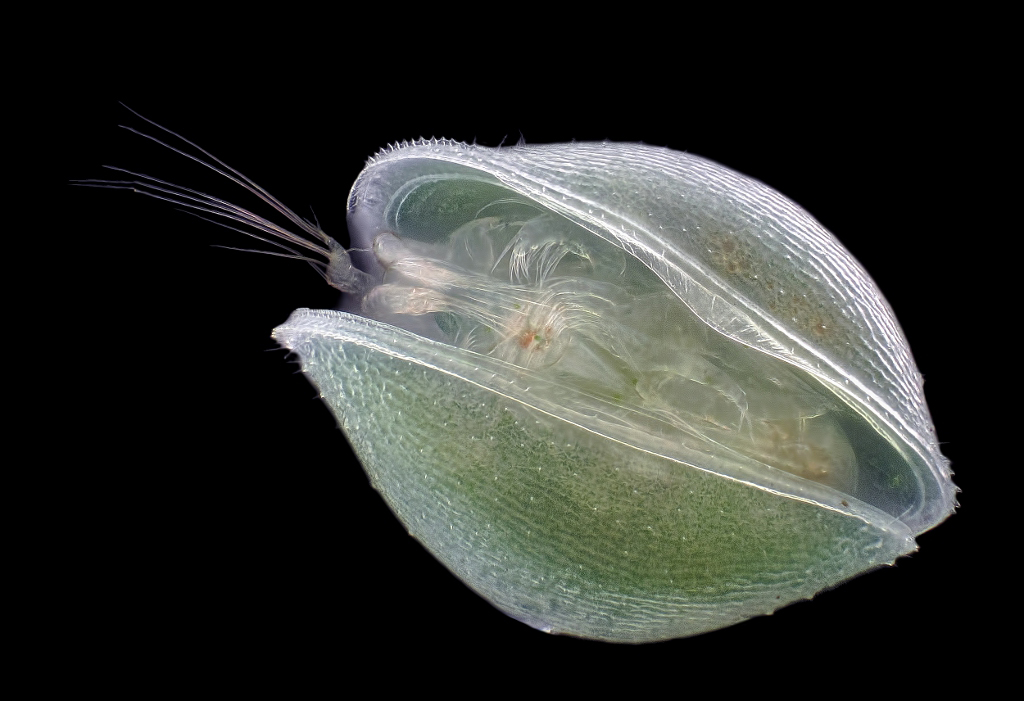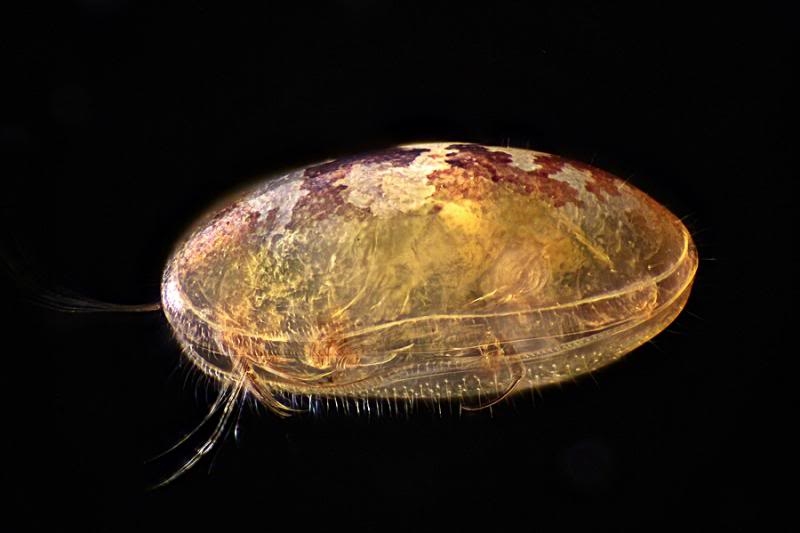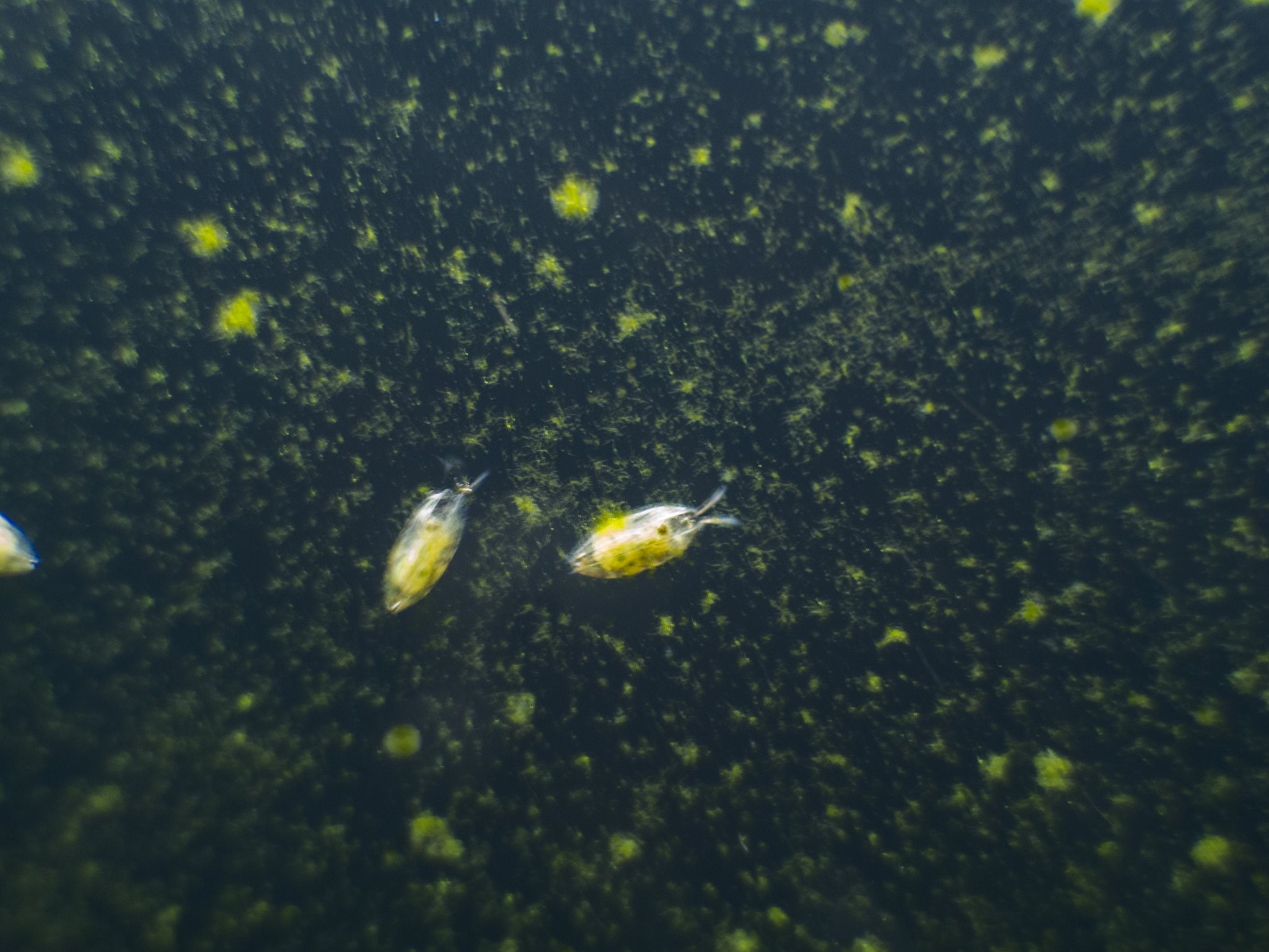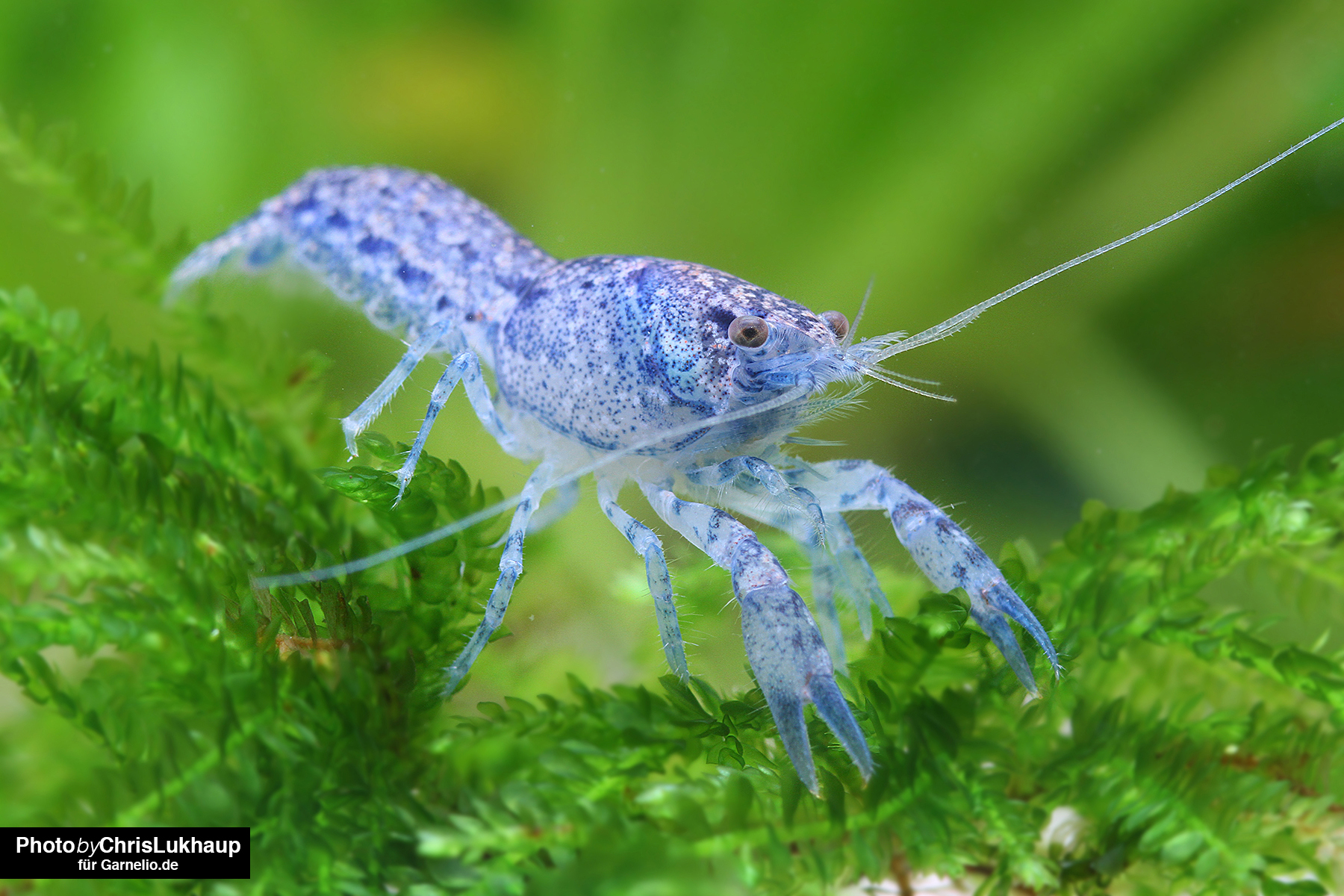Shellfish in the aquarium
Shellfish belong - as the name already tells us - to the small crustaceans. This makes them distant relatives of our shrimps, even if they don't actually look like them.

Occurrence
Clam crustaceans are also called ostracods. They are found in both freshwater and seawater, and are found practically all over the world. There are even land-living ostracods. So far, about 2000 species of freshwater ostracods have been described, but it is expected that a very large number of species have not even been discovered yet.
Accordingly, an assignment is difficult with mussel crabs in the aquarium, one can not determine the exact species as a rule. The good news is that this is not necessary. The vast majority of ostracods "tick" very similarly.
Structure of a ostracod
A ostracod, also called a clam shell, has an exoskeleton made up of two halves. The name "clam shell" refers to these two halves, which actually somewhat resemble a clam. The amazingly hard and firm shell hides the actual animal. The shells hang together at the back. So the ostracod can fold them apart a split width at the belly to stick out its rudder legs or walking legs and move around, and of course to feed or to mate. When in danger, a ostracod can fully retract its limbs into its shells and close the shells very tightly. There are reports that some fish do not digest tightly folded ostracods (because the shells are too sturdy) and excrete them along with their feces. It has been observed that ostracods then reopened their shells and continued on their way as if nothing had happened.
Shellfish in freshwater aquariums
In the following we will deal with the ostracods commonly found in freshwater aquariums.

Appearance
The shells of the ostracods commonly found in the aquarium are whitish to grayish in color, depending on the species, but there are also very dark, almost black ostracods and those with a zebra or check pattern. In terms of shape, they can also vary: there are species in which the shells are clearly oval-shaped, kidney-shaped or more or less round. What they all have in common is that the seam between the shells can be easily seen under a good magnifying glass (which is a useful and sensible aquarium accessory anyway).
Size
The size of the ostracods also varies. While there are extremely tiny representatives, which grow only 0.5 mm long, there are also real "giants" (which are of course still quite small compared to other aquarium inhabitants) of 2-3 mm in size.
Locomotion
Clam crabs either crawl on the bottom, on roots and plants, or they swim through the water. While doing so, they sometimes perform gyrating movements, their swimming style is sometimes compared to a helicopter. They swim relatively fluidly and do not move jerkily.

Reproduction and introduction
Clam crabs are unisexual, meaning there are males and females. Males have two penises, and females have two sexual orifices. A distinctive feature is the size of the spermatozoa of an ostracod male: when rolled out, they can be six times as long as the whole body of the animal. Some species also reproduce completely or partially by virgin reproduction, in which case the females do not need males at all, they can reproduce without fertilization. In this case a single animal is sufficient to build up a population.
Clam crabs lay permanent eggs that can survive drought well. They are often drifted with the wind and are part of the normal dust in the air - this explains why mussel crabs can also appear in aquariums where no plants or decorative objects from other aquariums are brought in. Otherwise, shell crabs can also be introduced with pond food and other live food, they can sit on plants or decoration, be brought in transport water from fish and shrimp or snails ..

Image: Ricardo Castellanos
Risk of confusion
Clam crabs like to be confused with other small crustaceans in the aquarium. Especially often with hopper crabs or water fleas. However, these animals move in a jerky manner, not gliding or gyrating like a ostracod. At the latest under the magnifying glass one can be quite sure that it is a mussel crab, if one can recognize the name-giving shells.
Food
The vast majority of ostracods in freshwater aquariums live on detritus, food remains, biofilms, carrion and freshly dead animals, algae growth, floating algae and so on. They do not eat living plants and they usually do not go after living animals. So actually, the vast majority of ostracods in the aquarium are harmless to beneficial waste recyclers that do a good service in the biosystem by taking care of waste that might otherwise affect water quality.
There are (very rare!) exceptions: some species of ostracods are distinctly predatory. These predatory species usually live in the sea. They also exist in freshwater, but they are really only present in aquariums in absolute isolated cases. There they rather eat molluscs like worms and snails, even predatory ostracods will only eat living shrimps directly after moulting, when the shell has not hardened yet.

Problem
Apart from the predatory species (which, as mentioned, are extremely rare in freshwater aquariums), clam shellfish are rather peaceful tankmates. However, a problem can arise with lidded snails such as Neritina, Piano snails, Faunus ater or Apple snails: If a curious ostracod crawls around on such a snail, it may retract and close its lid. Since ostracods are not the fastest aquarium animals, the ostracod may be trapped. Then it will try to escape, but in doing so it will disturb the snail and irritate it more and more, so that it closes the lid tighter and tighter. In extreme cases, the snail may not uncover at all and starve to death or die from stress. In aquariums with rare snails or in aquariums with lidded snails, the mussel crab population should therefore be kept under control as much as possible.
In shrimp aquariums, ostracods have no predators. In case of a heavy infestation, juvenile shrimp may not find sufficient food because the mussel shells represent too strong a food competition for them - after all, they eat exactly the same as the shrimp babies.
Benefits of shellfish in the dwarf shrimp aquarium
According to the experience of many years of successful keepers and breeders of dwarf crayfish, ostracods in the aquarium are very readily hunted and eaten by these same dwarf crayfish. Mussel crayfish are a very useful additional food for juvenile and also for adult dwarf crayfish. On the one hand, the active hunting of the living mussel crayfish is a natural occupation for the small crayfish and brings variety into the life in the aquarium. Thus the dwarf crayfish have something to do and have to "earn" their food.
On the other hand, mussel crayfish, as small crustaceans, contain many substances that dwarf crayfish need: For example, they obtain chitin and calcium, which are urgently needed for their own shells, from the shells of the mussel shells. Shellfish contain natural molting hormones that also benefit the crayfish, and of course they are also a completely species-appropriate, natural source of protein. The protein that shellfish provide is easily tolerated by crayfish and thus does not cause molting problems. Since the dwarf crayfish can help themselves to the mussel crayfish population at any time, it is also impossible for them to "overeat" on protein and consume too much. In this way, they cover their needs naturally.
Furthermore, a population of ostracods in the dwarf crayfish aquarium provides a useful clean-up force - crayfish are not the most mannerly eaters, and the ostracods take care of the scraps left behind by the crayfish when they crumble and in turn provide good food for the dwarf crayfish - a useful cycle in the aquarium.

Containing mussel crayfish
You certainly can't get rid of ostracods completely in the aquarium. In fish aquariums they retreat into the substrate, into cavities in the roots, into the filter, into the plants ... in addition, some fish species excrete ostracods undigested as described above. Using predators in shrimp aquariums is also of limited use - everything that eats ostracods also goes to small shrimp offspring.
If you consider that the ostracods fulfill an important task in the ecosystem of the aquarium as scavengers, you should not fight them actively - they have their purpose in the biology of the aquarium!
Only if their number becomes too large, one should intervene regulating. Chemical control is not allowed in invertebrate aquariums - since ostracods belong to the same animal class as shrimps and crayfish, any poison that is effective against them would be absolutely lethal for shrimps and other crustaceans.
So what remains is population reduction through moderate feeding - ostracods will take care of leftover food. The more food, the more they reproduce. If there is less food left over, the reproduction of the ostracods is also kept within limits. If this is not possible, because in a rearing aquarium the young animals should be "in the food", or because shrimp babies are in the aquarium, which get dust food, you can also simply collect mussel crabs.
Vegetable feeding has proven itself here. Simply put an unsprayed and otherwise untreated piece of cucumber or a slice of tomato into a very fine fish net and place it in the aquarium. After some time shellfish will have collected here in large numbers and you can simply take them out of the aquarium with the piece of vegetable. Rinse them off (please make sure that no live mussel crabs can get into the sewage system!) and repeat the whole process if necessary. Alternatively, you can also equip a planarian trap with vegetables and use it to collect the ostracods.

Wasserflöhe im Schneckenaquarium?
Hallo, ich wollte mir Wasserflöhe für mein Aquarium holen. Ich habe Schnecken mit Deckel und Muscheln. Können Wasserflöhe diese Tiere auch so stören, dass sie sich für immer verschließen?
zu viele Muschler
in meinen beiden 40Liter Becken halte ich Garnelen. Von Zeit zu Zeit habe sich die Muschler zustark vermehrt. Dann setze Guppybabys ein. In wenigen Tagen sehe ich dann keine Muschler mehr. Ca 14Tage später werden die Muschler langsam wieder zahlreicher. Sind es wieder zu viele, naja Guppybabys hat mein Mann immer. So löse ich das Problem. Und dann habe die Gyppys immer gutes Futter
Gurkensalat haben sich bewährt
Die letzten Wochen über habe ich mich über die Vielzahl der kleinen Käfer gewundert, die mein 20 Liter Garnelenaquarium bevölkern. Ich kann sie besser beobachten, als die Garnelen. Die verstecken sich lieber. Bei mir tummeln sich die Muschelkrebse am liebsten im Filter. Beim Reinigen des Filters dezimiere ich die Anzahl regelmäßig. Zum Ansammeln zwischendurch nutze ich Gurkenstücke. Danach sind die Krebschen ganz verrückt.